An Iftar at Hazrat Nizamuddin’s Dargah, a Date with History
Ramzan brings with it a season of midnight feasts with foodies making a beeline for Old Delhi, Shaheen Bagh and Zakir Nagar to enjoy freshly cooked meats, breads and other delicacies at eateries that do maximum business after sunset and before sunrise. You may get a chance to enjoy food that tingles your taste buds at these midnight markets but for a truly immersive Ramzan experience, one must pay a visit to Hazrat Nizamuddin Aulia’s dargah in central Delhi.
Long dastarkhwan (a traditional mat) is spread across the length and breadth of the Sufi saint’s courtyard and hundreds of people gather every evening to enjoy the langar (free meal) at iftar (evening meal to break fast) time, followed by a sumptuous dinner. The powerful mystic had once made a promise that those who live near his dargah will never go without food.
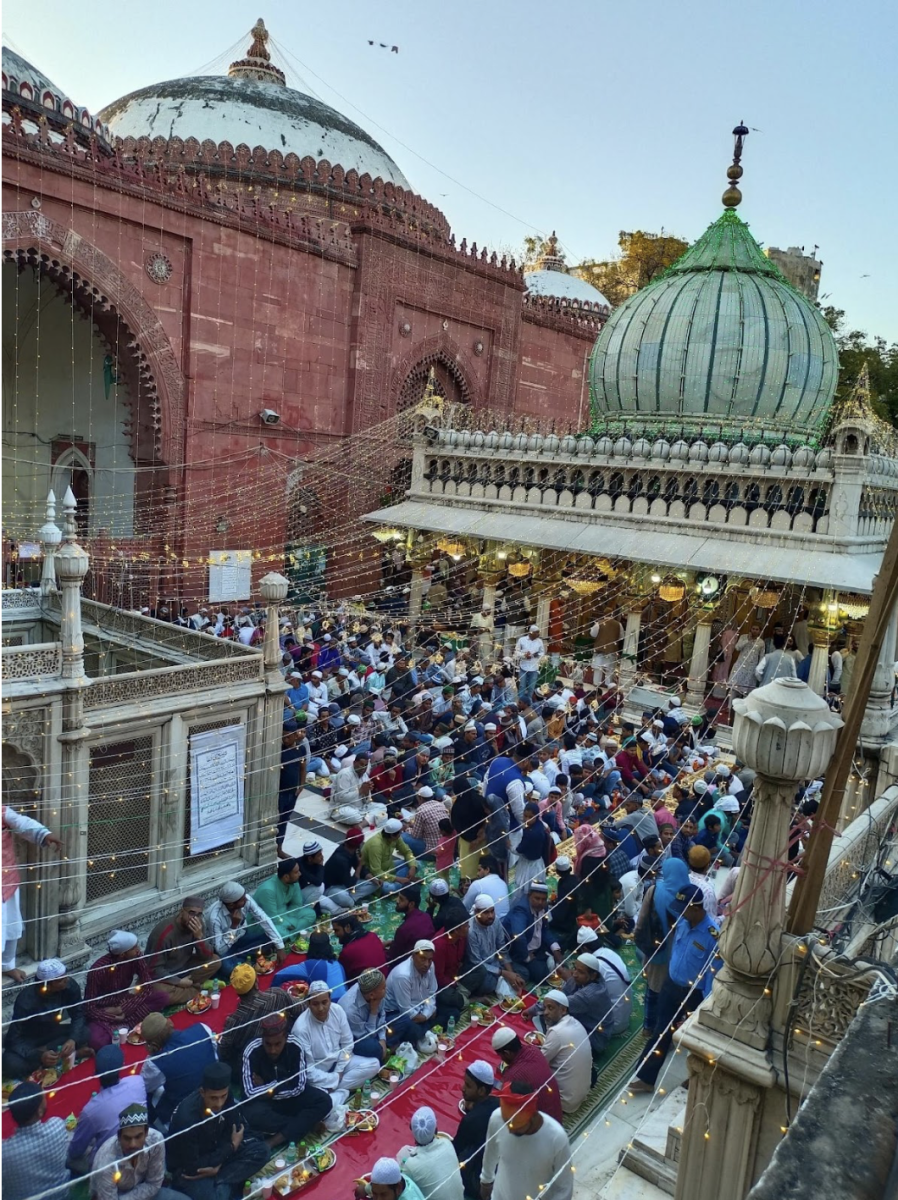
The crowd at Hazrat Nizamuddin Aulia’s dargah at Iftaar time. Photo: Syed Altamash Nizami
Hazrat Nizamuddin Aulia did not marry and after his demise the responsibility of handling the affairs of the dargah fell on his nephew Abu Baqr Chishty (R.A.). Over the last 770 years, his descendants have ensured that the Sufi saint’s promise is kept. Langars are organised twice a day, throughout the year and during the month of Ramzan, the dastarkhan is spread out for the pre-dawn and post sunset meals.
Syed Altamash Nizami oversees the distribution of food, along with his siblings, and together they are the 21st generation of the family who are keeping the tradition alive.
He says feeding people is intrinsic to Sufi tradition. “Allah is the provider, and he likes those who feed people because they are helping in God’s work. Feeding people is God’s work. Sufi saints have also emphasised the importance of feeding the poor. Even today, people gather at Hazrat Nizamuddin Aulia’s dastarkhan to eat, like they did when he was alive.”
Altamash also says that his family makes arrangements to feed 1500 to 2000 people at iftar every day. “God provides and Mahboob-Pak is the means through which people are fed,” he adds.
An evening here at the mystic’s courtyard is a date with history. Hazrat Nizamuddin’s dargah sees thousands of visitors every day. They come from all corners of the world, looking for guidance and to seek his blessings. The atmosphere around his dargah is that of a fair. The rich and powerful rub shoulders with the homeless and needy as they seek an audience before the Sultan of Delhi. Khwaja Sayyad Nizamuddin Mohammad is the patron saint of Delhi and the man who rules over this matrix of power, emotions and destiny.
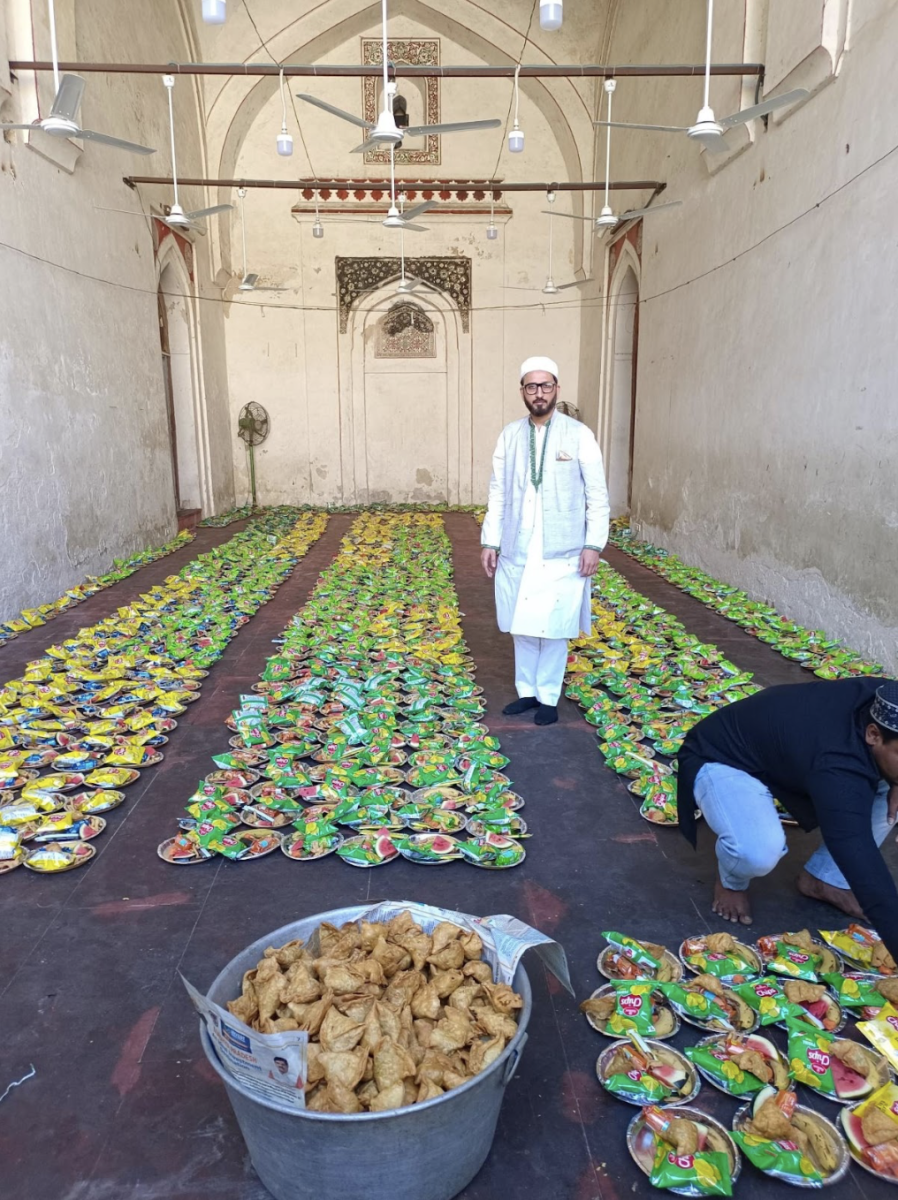
Syed Altamash Nizami overseeing Iftaar preparations at Hazrat Nizamuddin Aulia’s dargah.
The legend
Sayyad Nizamuddin Mohammad’s grandparents belonged to the nobility of Bukhara in present day Uzbekistan. They fled their homeland, leaving behind their wealth, when Ghengis Khan attacked and looted the city. The family travelled from Bukhara, through Lahore and then settled down in a small city away from political strife. Nizamuddin Mohammad was born in 1238 in the city of Badaun in Uttar Pradesh. When he was just 6 years old, he lost his father. He lived in abject poverty with his mother and is known to have spoken of days when there was not a morsel to eat at home. On those days, when he asked for food, his mother would tell him that they were ‘Guests of God’.
In 1260, at the age of 16, Nizamuddin moved to Delhi as Badaun could no longer satisfy his thirst for knowledge. He studied in Delhi for 4 years and after completing his formal education he travelled to Ajodhan, now known as Pakpattan in Pakistan, to study under the spiritual guidance of Hazrat Baba Farid Ganjshakar. A great Sufi mystic of the Chishty order and a renowned poet, Hazrat Baba Farid awarded Mohammad Nizamuddin the khilafat or caliphate of Delhi upon completion of his spiritual learning. Receiving the khilafat meant that Nizamuddin Mohammad now had the responsibility to look after the people of Delhi.
Legend has it that Baba Farid had first awarded the khilafat of Delhi to his disciple Sayyid Allauddin Ali Ahmed, on his request. Sayyid Allauddin Ali Ahmed, or Sabir as Baba Farid fondly called him, was also his nephew. After writing down the khilafat nama, Baba Farid asked Sabir to travel to Hansi in Haryana to meet his other disciple Sheikh Jamaluddin Hansvi who was in possession of Baba Farid’s ‘mohar’ or seal. Sabir was asked to get the ‘khilafat nama’ stamped from Jamaluddin. He walked for several days from Ajodhan to Hansi without stopping to eat or rest. When he arrived in Hansi, the sun had begun to set and the lamps had not been lit yet.
Sheikh Jamaluddin asked Sabir to wait until after the Maghrib namaz (evening prayer) so he could stamp the khilafat nama in the light of a lamp. Instead of waiting, Sabir unfolded the document before Jamaluddin. He blew on his index finger, and it lit up like a candle. He then asked Jamaluddin to stamp the document so he could be on his way.
Taken aback by his impatience, Jamaluddin blew out the fire on Sabir’s finger and tore up the khilafat nama. He is known to have said, “Dehli waale tumhaara jalaal bardasht nahi kar payenge”, which translates to: the people of Delhi will not be able to survive your fiery temperament.
An upset Sabir returned to Ajodhan and asked Baba Farid to give him another khilafat nama for Delhi to which his peer replied, “Jo Jamal ne chaak kar diya, usse Farid nahi see sakta (what Jamal has torn, Farid cannot fix).”
Sabir Pak was then given the khilafat nama for Kaliyar near Roorkee in Uttarakhand and Nizamuddin Mohammad was awarded the khilafat of Delhi in 1265. Baba Farid also appointed Nizamuddin Mohammad as his heir to lead the Chishti order in India.
Syed Altamash Nizami says that the story goes that Hazrat Baba Farid told Baba Nizam, “Tum uss saayedaar darakht ke manind honge jahan makhlooq-e-khuda araam paayegi aur faizyaab hogi.” It translates to: you will be like a tree under whose soothing shade people will find comfort.
Nizamuddin Mohammad returned to Delhi and soon found a home in Gyaspur on the banks of river Sitari, a tributary of Yamuna. He lived in abject poverty and sometimes had to go many days without a morsel of food. According to Tareekh-e-Farishta, widely believed to be one of the most authoritative works on Sufi saints, once Nizamuddin Mohammad and his disciples were forced to starve for four days. A poor woman from the neighbourhood, who used to spin yarn to make ends meet, got wind of their starvation and sent some flour. Nizamuddin Mohammad asked one of his disciples to mix the flour with water and put it to bake in an earthen pot. The bread was still not ready when a dervish appeared at his doorstep and demanded food. Nizamuddin Mohammad asked him to wait as the bread was still baking. As the dervish got impatient, Nizamuddin Mohammad brought the boiling pot of flour, mixed with water, and placed it before him. The dervish smashed the pot with his stick and said, “Baba Farid has bestowed you with spiritual blessings and I am breaking the pot of your material poverty.”
From that day onwards, gifts started pouring into Nizamuddin Mohammad’s khanqah. His disciples grew in number as thousands thronged to him in search of knowledge, spiritual guidance, food, shelter and comfort. No one would leave the khanqah empty handed. Langars were laid out twice a day and hundreds gathered to eat at the Sheikh’s dastarkhwan.
Nizamuddin Mohammad’s growing popularity made the Khilji dynasts insecure. Jalalludin Khilji requested a meeting, but the Sufi mystic had an aversion to kings and politics. He denied the request. Jalalludin planned a surprise visit to the khanqah but Nizamuddin Mohammad found out about his plan and left for Ajodhan to meet his ‘peer’ or spiritual guide, Baba Farid. Despite repeated declarations from Nizamuddin Mohammad about his disinterest in the matters of the State and abhorrence for politics, successive kings saw the mystic with suspicion. They saw him as a threat because of his popularity with the masses.
After Jalalludin Khilji and Allauddin Khilji, it was Gyasuddin Tughlaq’s turn to inherit the insecurity of having a Fakir in his capital who was a force to reckon with. Legend has it that emperor Gyasuddin Tughlaq asked his men to cut off the supply of water to Nizamuddin Mohammad’s khanqah. Refusing to bow down, Nizamuddin Mohammad asked his disciples to dig a baoli (stepwell) to ensure a regular supply of water. These orders were passed at a time when the emperor was getting the citadel of Tughlakabad built and had banned all labourers from working at any other construction site.
As word spread that Nizamuddin Mohammad had asked for the construction of a stepped well near his khanqah, masons and labourers left their work in Tughlakabad and offered their services to the mystic. Enraged by their defiance, Gyasuddin ordered harsh punishments for those who were leaving his dream project. An angry Nizamuddin is said to have cursed the city of Tughlaqabad, saying, “ya rahe ujjaard, ya basse gujjar (the city will either remain desolate or be occupied by herdsmen)”.
The Sufi advised his followers to not abandon their work at Tughlaqabad and help with the baoli at night. When Gyasuddin got wind of how construction work for the baoli was continuing at night, he cut off the supply of oil which was being used to fuel lamps. Nizamuddin Aulia asked his disciple Nasiruddin Mahmood to fill the lamps with water that had merged at the bottom of the ‘baoli’, and then light them. Nasiruddin tried to reason with his ‘peer’ that lamps could not be lit with water, but Nizamuddin Aulia asked him to do as he was told. To Nasiruddin’s surprise when he brought fire close to the wet wick of a lamp, it lit up. The lighting of a lamp with water earned Nasiruddin Mahmood the title of ‘Chiragh Dehli’ – the Light of Delhi. The work for the baoli was completed in the light from lamps that were lit using this water, and Nizamuddin Mohammad’s khanqah got its own water supply.
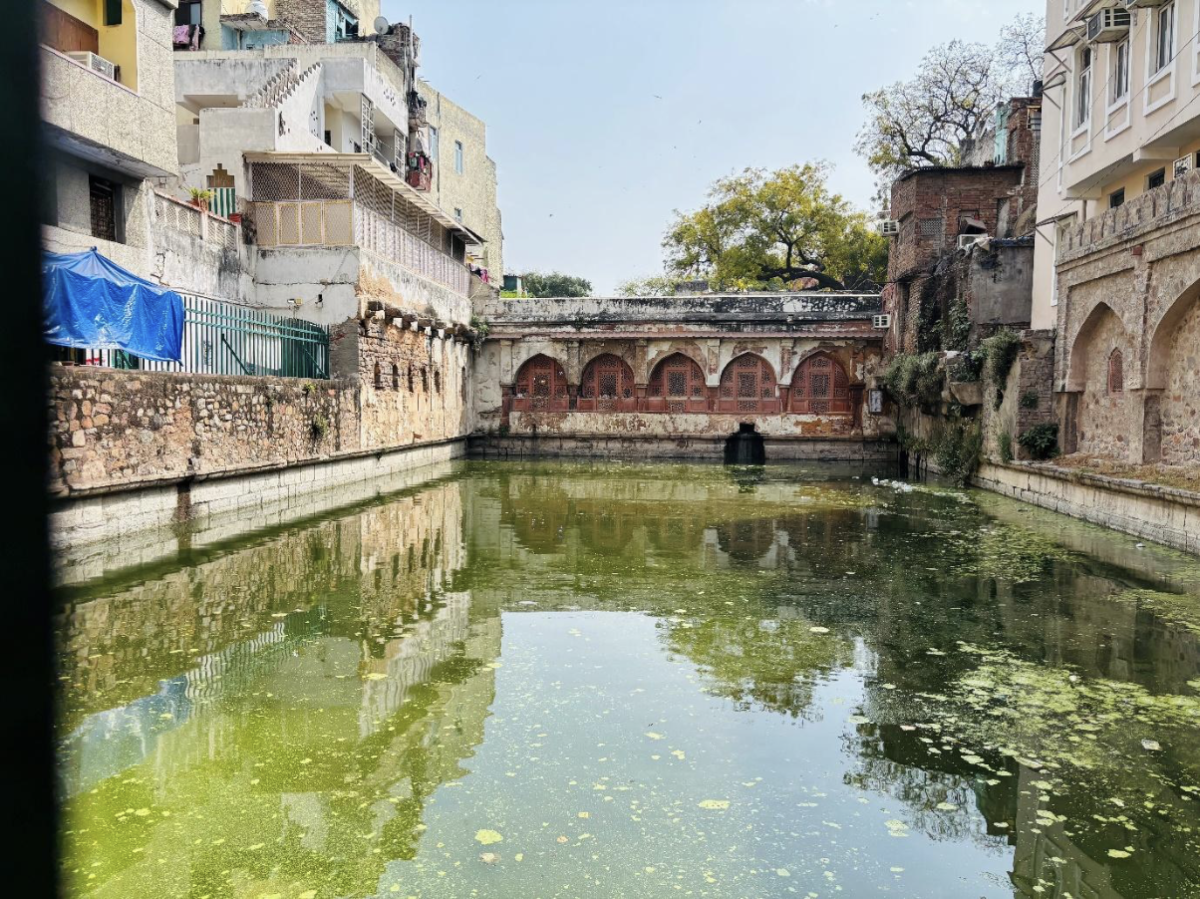
Baoli inside the dargah complex of Hazrat Nizamuddin. Photo: Seemi Pasha
More than 700 years later, the baoli near Hazrat Nizamuddin’s dargah is still full of water while Tughlaqabad remains desolate. Gyasuddin Tughlaq’s dream city could never be inhabited. After his death, his son moved his capital to Daulatabad and Tughlaqabad was abandoned. Meanwhile, Nasiruddin Chiragh Delhi’s dargah in South Delhi is one of those rare places where one can find tranquillity in this metropolis.
Throughout his tenure as king, Gyasuddin Tughlaq tried to create hardships for Nizamuddin Mohammad who would politely find a way to avoid confrontation, and the king was consumed with hatred. Legend has it that Gyasuddin was forced to travel to Bengal to suppress a civil war. After demolishing all opposition in Bengal, he fought and won another battle with the king of north Bihar and annexed his territory.
On his way back to Delhi, Gyasuddin Tughlaq is known to have sent word that he wanted Nizamuddin Mohammad to leave his capital, before his return. As Gyasuddin’s army approached, Nizamuddin Mohammand’s disciples urged him to leave. The mystic famously said, “Hunooz Dilli door ast (Delhi is still far away)”. Gyasuddin Tughlaq died in an accident before he could enter Delhi and the mystic’s prophecy turned into another legend associated with him.
The Fakir who ruled over Delhi was more powerful than any king and his sphere of influence extended beyond geographical boundaries. Legend has it that one night after everyone had retired to bed, Nizamuddin Mohammad came out of his room and called his help.
He is believed to have said, “Dakkan ka raja bahar baitha hai. Usse khaana khila do (the king of the Deccan region is sitting outside. Give him something to eat)”. His help Iqbal went and searched but did not find anyone who fitted the description of a king. Nizamuddin Mohammad called him a second time and asked him if he had fed the king of Deccan. Iqbal again went out but could not find anyone. When Nizamuddin Mohammad inquired the third time, Iqbal told him that there was no one outside the khanqah except for a poor 14-year-old boy. Nizamuddin Mohammad told Iqbal that the 14-year-old boy was the king.
Iqbal invited the boy inside the khanqah but there was nothing left to feed him. The mystic instructed Iqbal to dust off the dastarkhwan and offer the leftover pieces of bread to the boy. The leftovers from the Fakir’s dastarkhan were blessings which are said to have changed the boy’s destiny.
The boy was Hasan Gango who went on to establish the Bahmani Sultanate that ruled over the Deccan plateau region for almost 200 years.
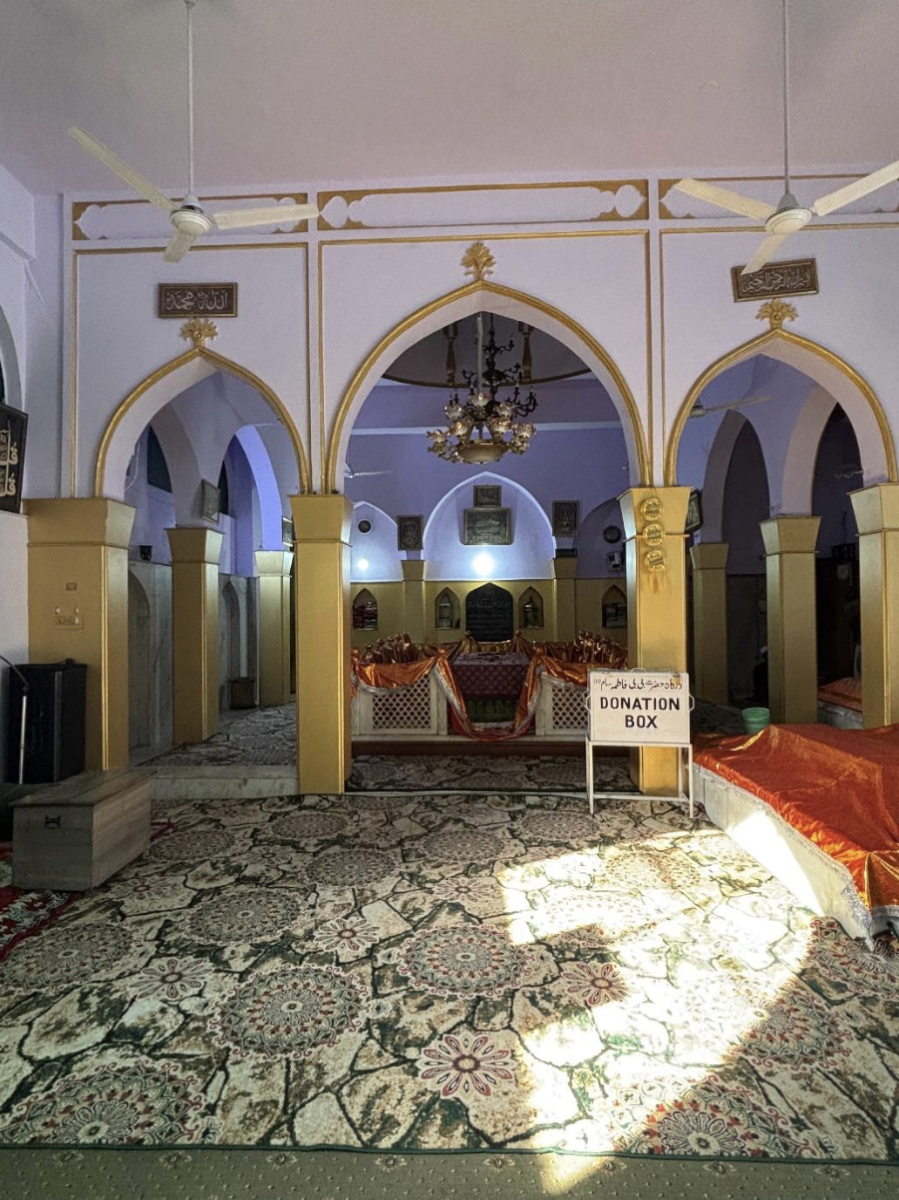
Bibi Fatima Sam’s khanqah near the Delhi High Court. Photo: Seemi Pasha
Hazrat Nizamuddin Aulia, as he came to be known, held Bibi Fatima Sam in high regard. She was a mystic who had come from the ancient city of Sam, believed to be located somewhere near the Iraq-Iran border, and had settled down in Delhi. Hazrat Nizamuddin Aulia referred to her as aapa or older sister. It is said that once a group of people asked Hazrat Nizamuddin Aulia if women could also become saints. He responded with, ‘when a tiger comes out of a forest, you do not ask if it is male or female’. This statement went on to reiterate the idea of equality of genders propagated by Sufism. Bibi Fatima Sam’s dargah is located in Kaka Nagar and is one of the quietest and most peaceful places in Delhi you can visit.
Hazrat Nizamuddin Aulia was getting old and the village of Gyaspur knew that the time to bid him goodbye was coming near. For decades, people had donated to the Sufi Saint’s khanqah out of their love and devotion to him and he had ensured that no one in the village went to bed hungry. People were afraid that his absence would stop the flow of gifts and they would again be pushed into starvation. The mystic assured villagers, “Those of you who will live near my tomb will not go hungry.”
When it was time for Nizamuddin Aulia to be reunited with his Maker, he called his help and asked him to give away everything. In 1325, he went from being a ‘Guest of God’ to being a ‘Beloved of God’ – Mehboob-e-Ilaahi – as he is popularly known.
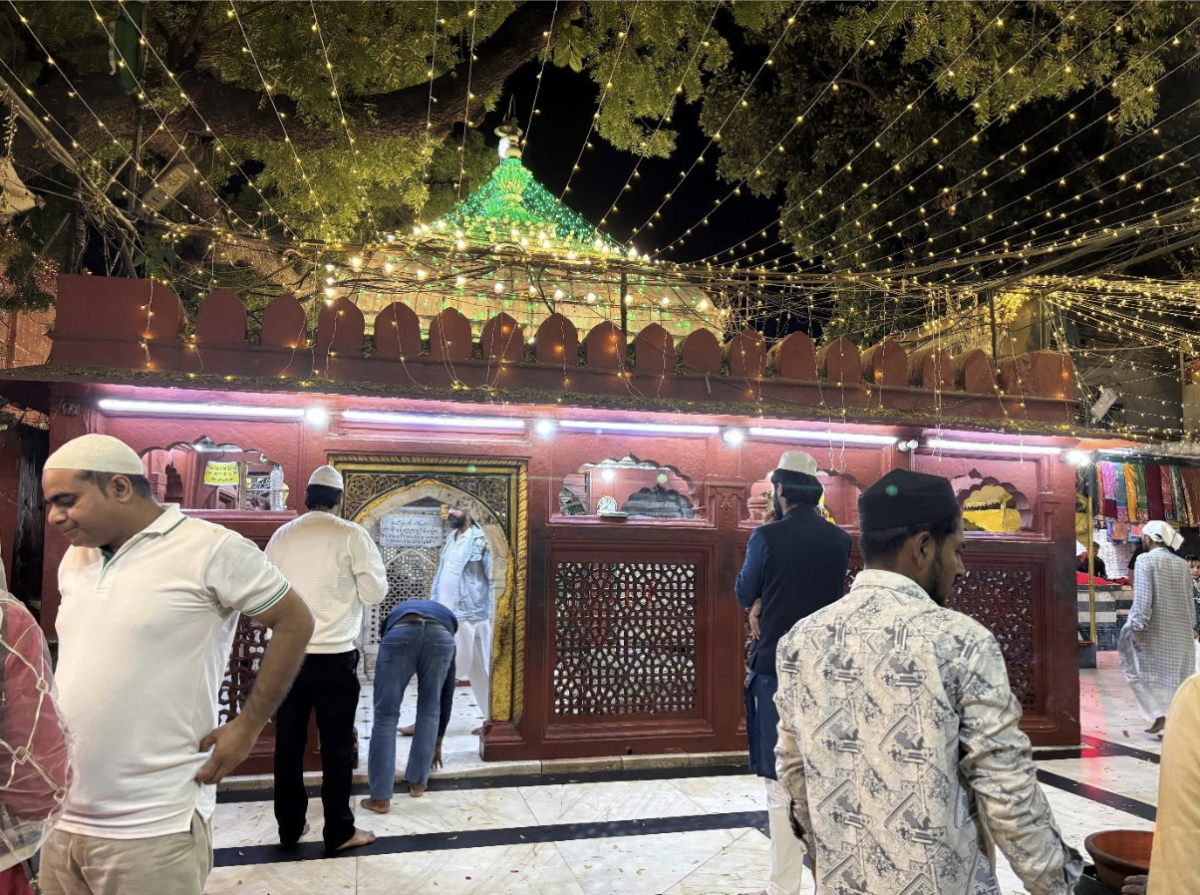
Hazrat Amir Khusro is buried in Hazrat Nizamuddin Aulia’s courtyard. Photo: Seemi Pasha
Amir Khusro, who is buried at the feet of Hazrat Nizamuddin Aulia, was a courtier of the Delhi Sultanate and a prolific poet. His duties as a soldier required him to travel frequently but he always returned to the feet of his spiritual master. He is credited with creating qawwali, a devotional form of music that combines Persian poetry with music. It is believed that Khusro was on a military expedition when Hazrat Nizamuddin Aulia passed away. An inconsolable Khurso sat at his peer’s grave for six months and then joined his master. The sound of qawwali that echoes in the courtyard of Hazrat Nizamuddin Aulia, and other Sufi saints was Khusro’s gift to the Sultan of Delhi.
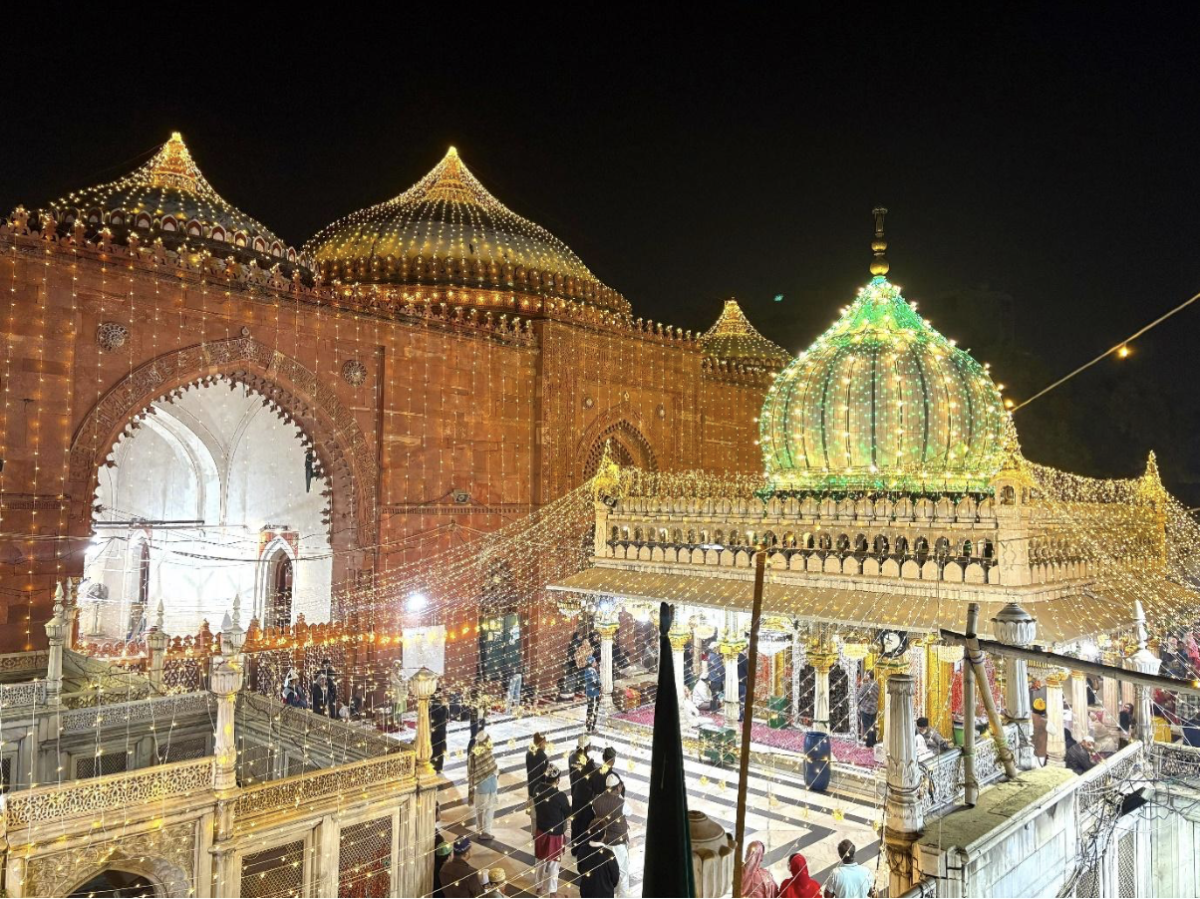
Dargah of Hazrat Nizamuddin Aulia in central Delhi. Photo: Altamash Nizami
More than 750 years later, Hazrat Nizamuddin Aulia’s khanqah is a centre of love, devotion and spirituality. Thousands come looking for spiritual guidance, to seek his blessings and an equal number still come looking for a fulfilling meal.
Seemi Pasha is an independent journalist and filmmaker based in Delhi.
This article went live on March twenty-eighth, two thousand twenty five, at twenty-one minutes past six in the evening.The Wire is now on WhatsApp. Follow our channel for sharp analysis and opinions on the latest developments.




